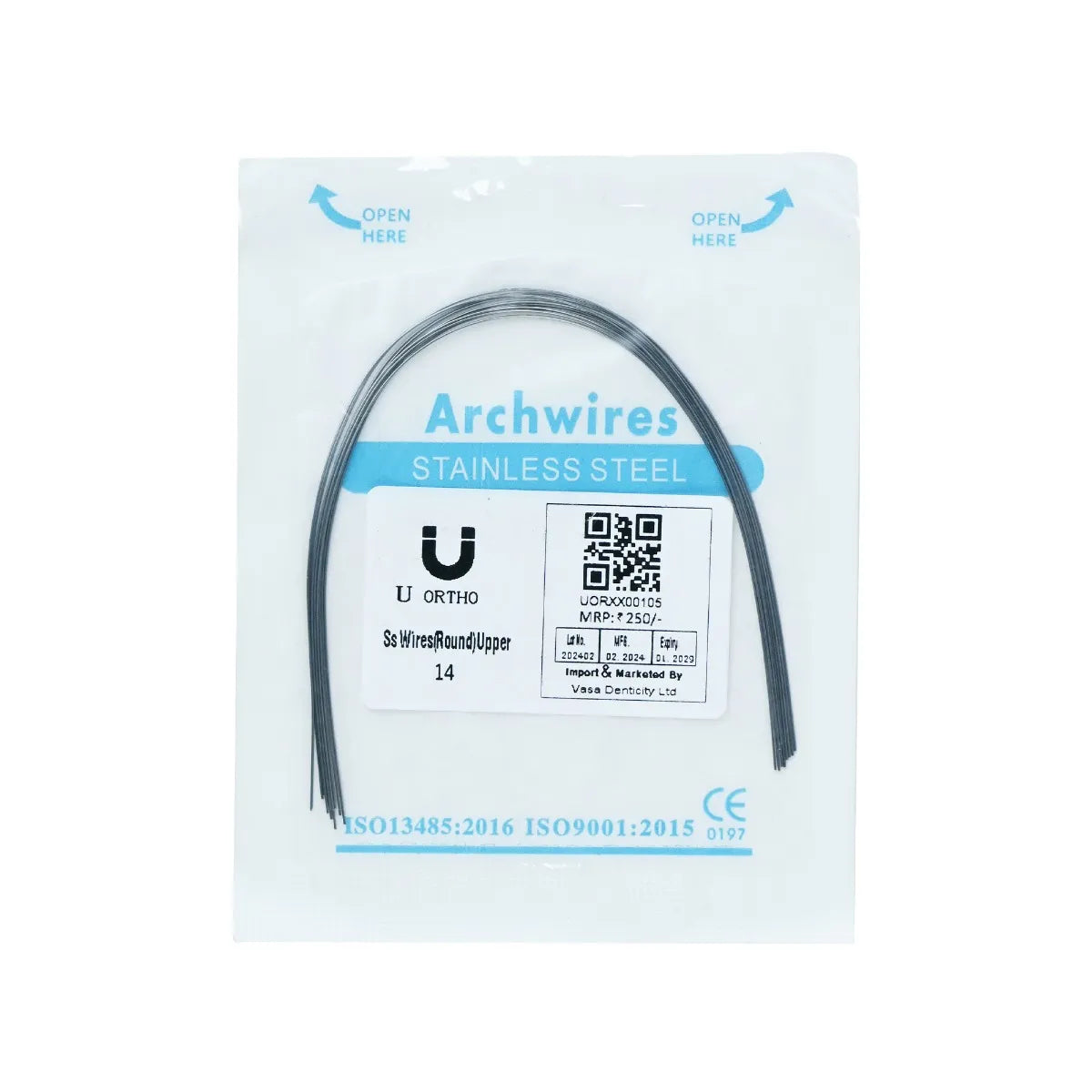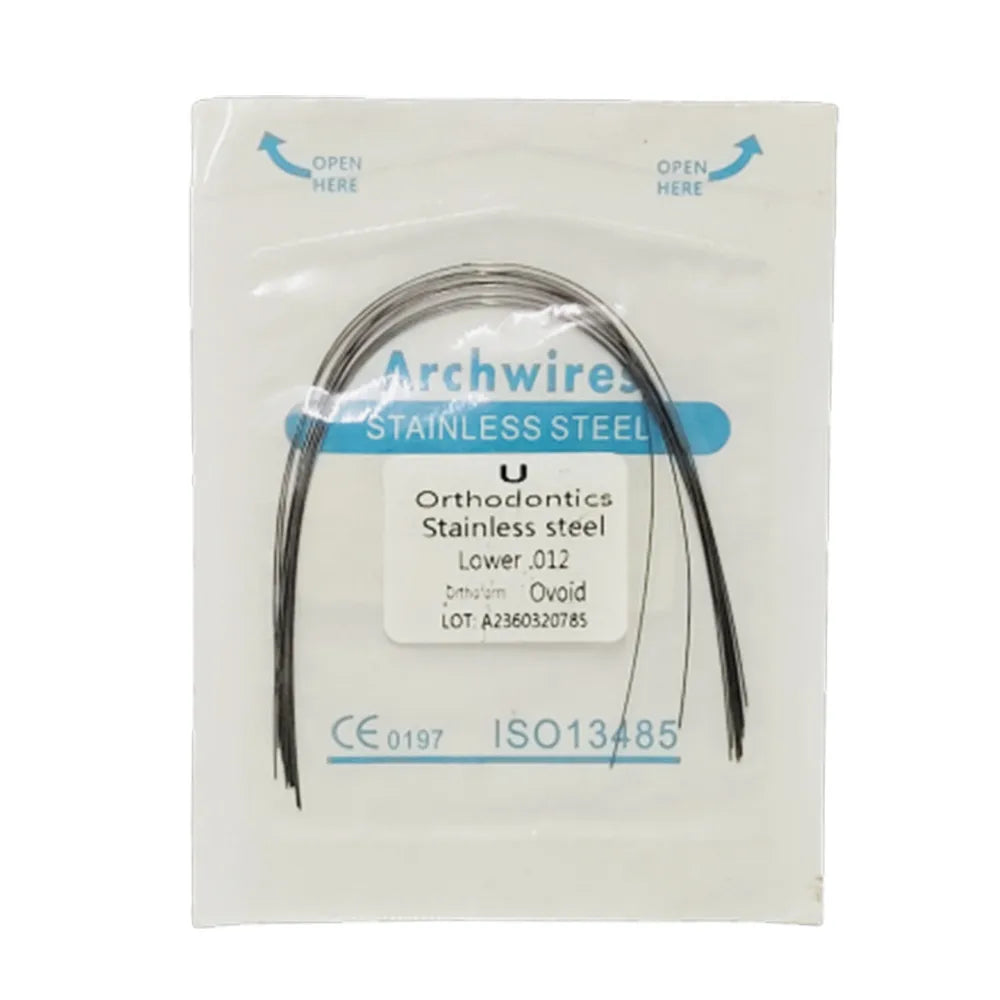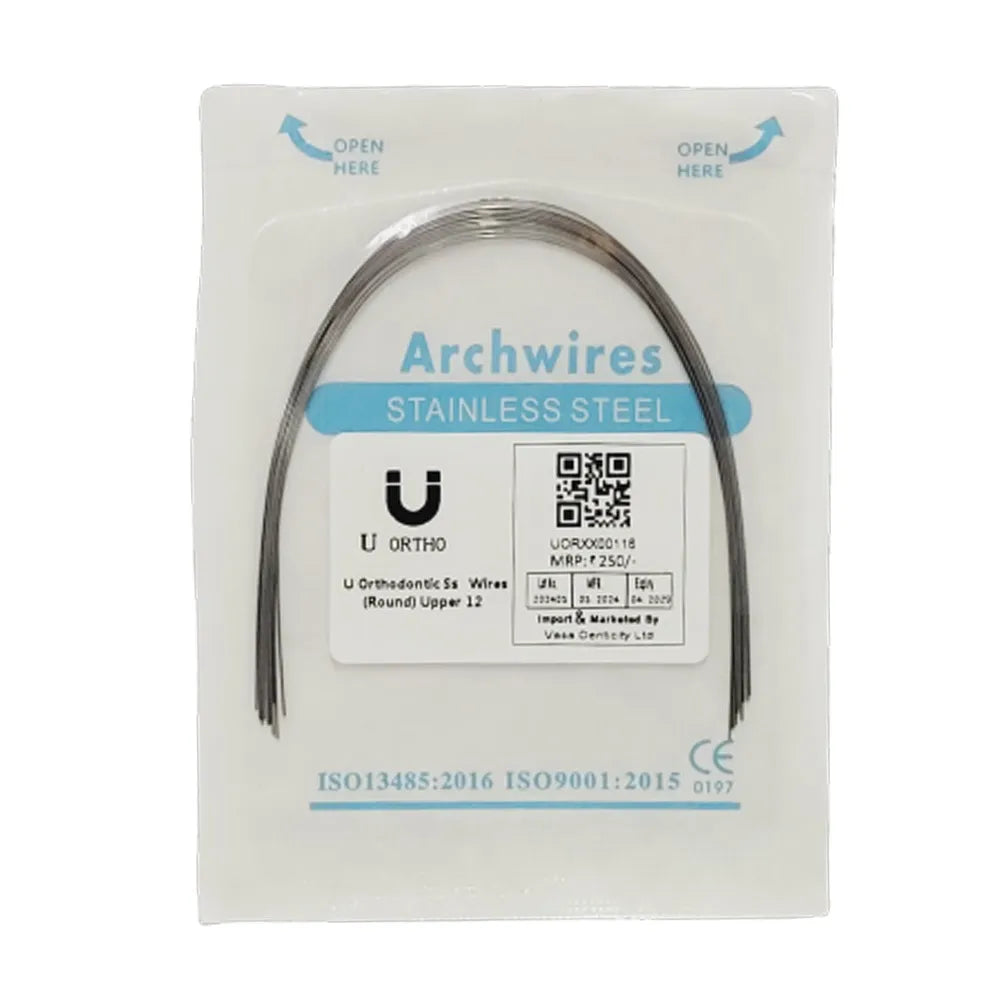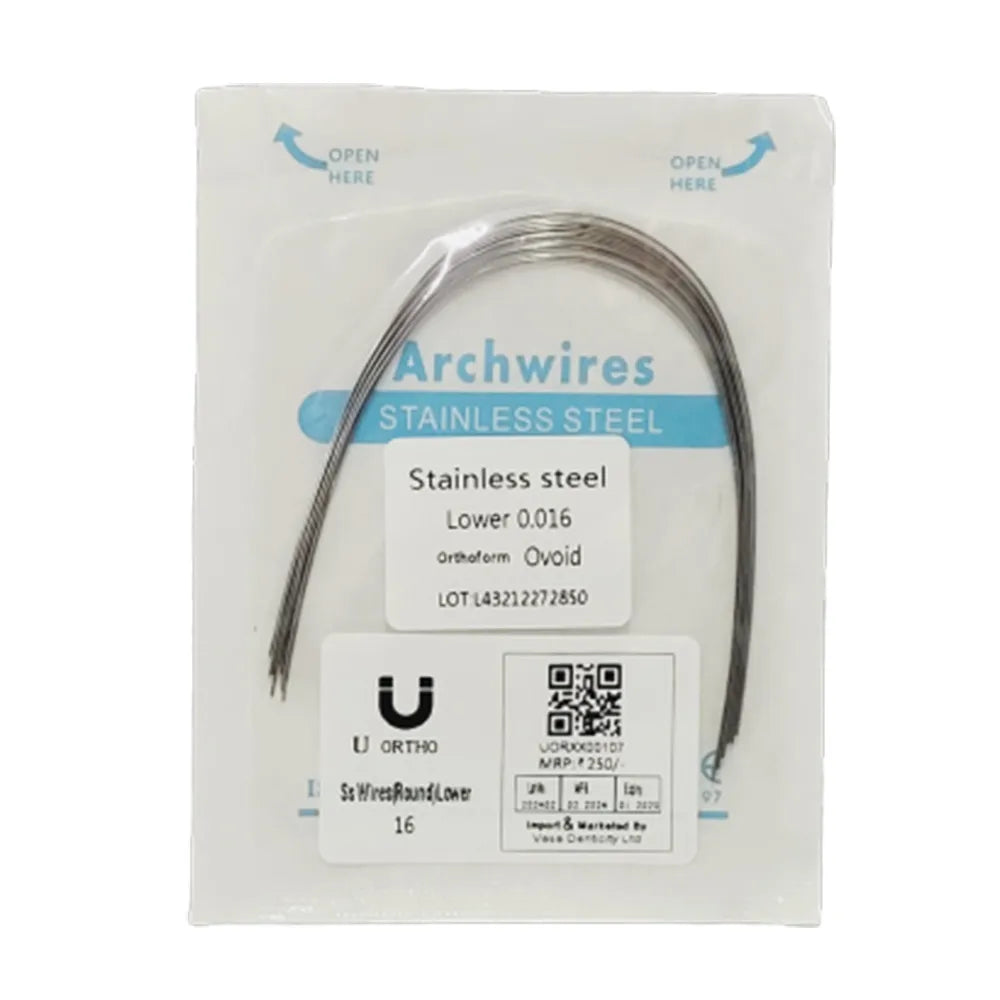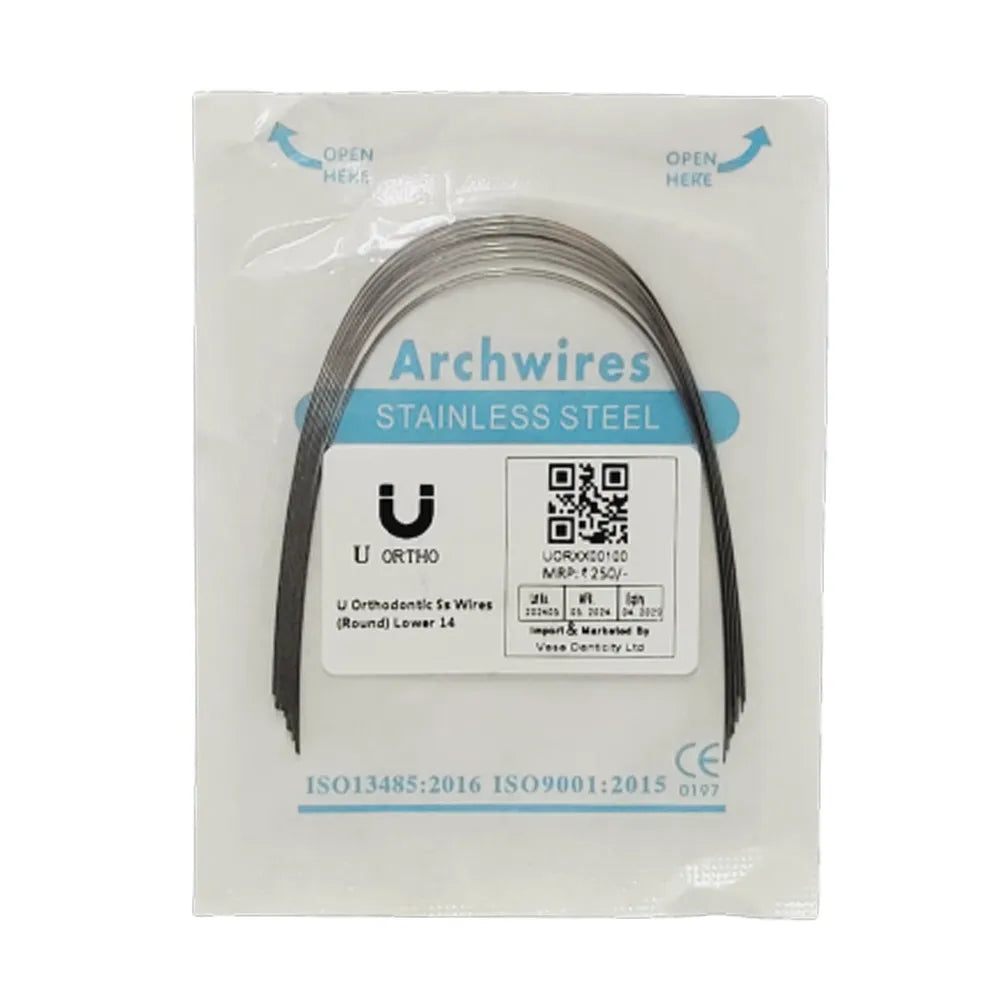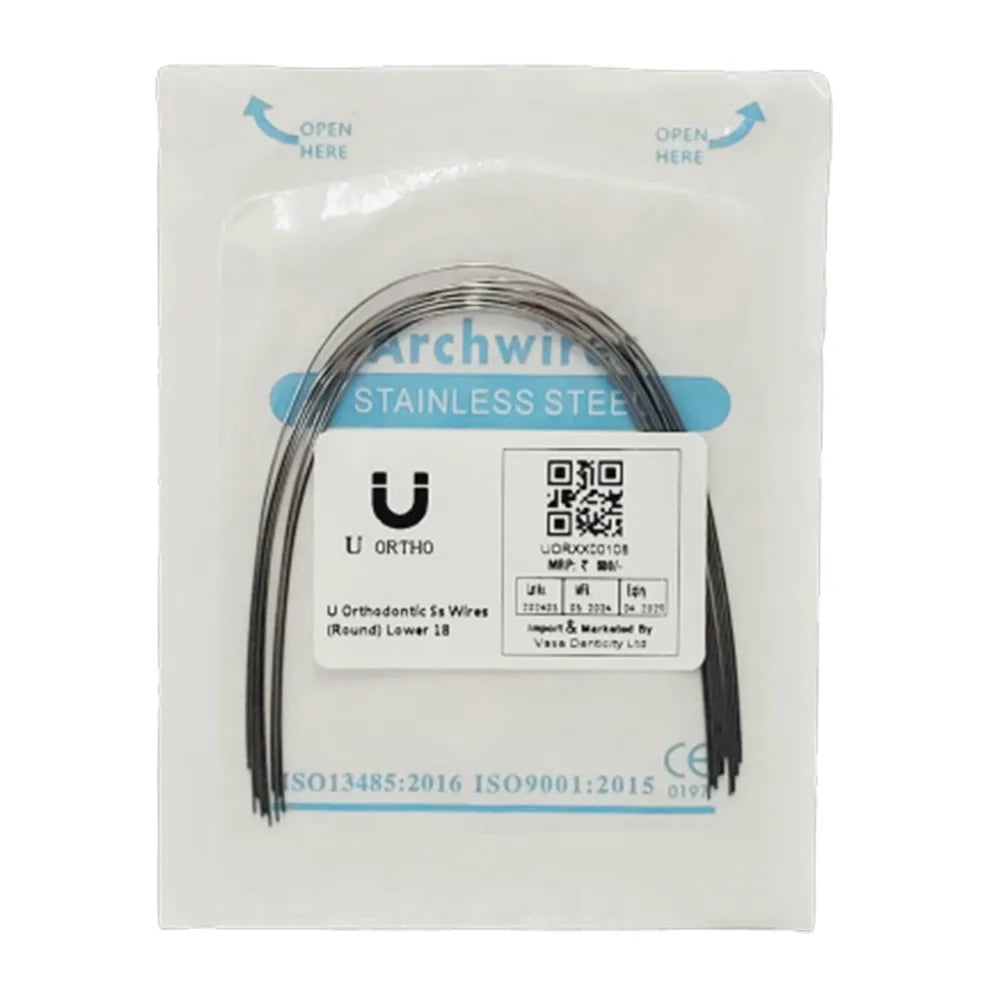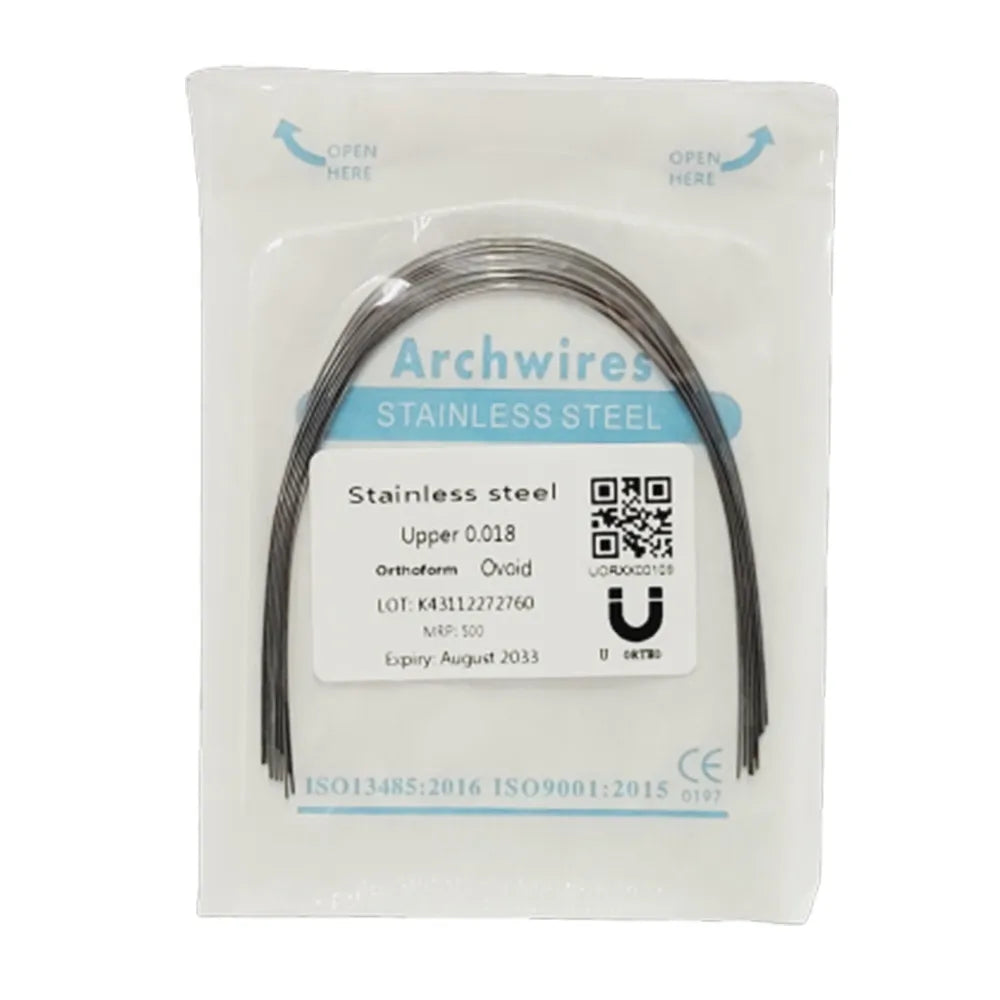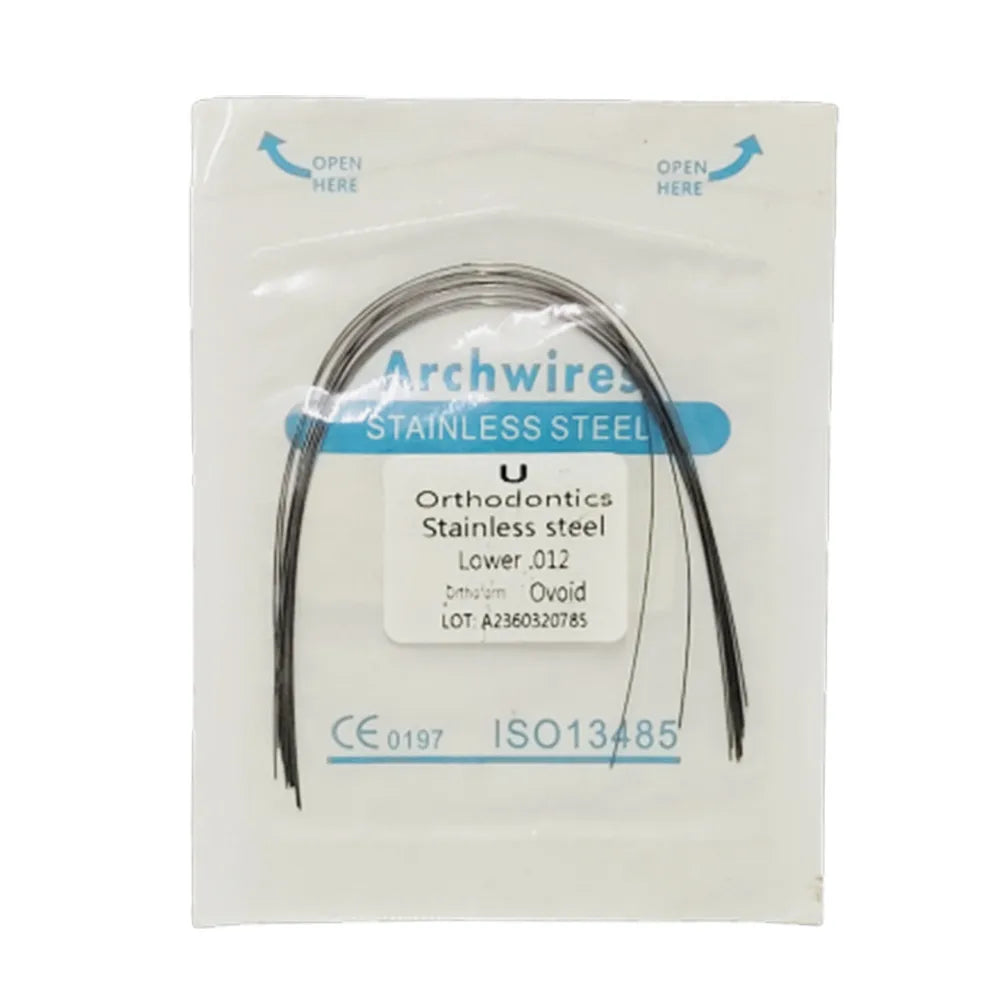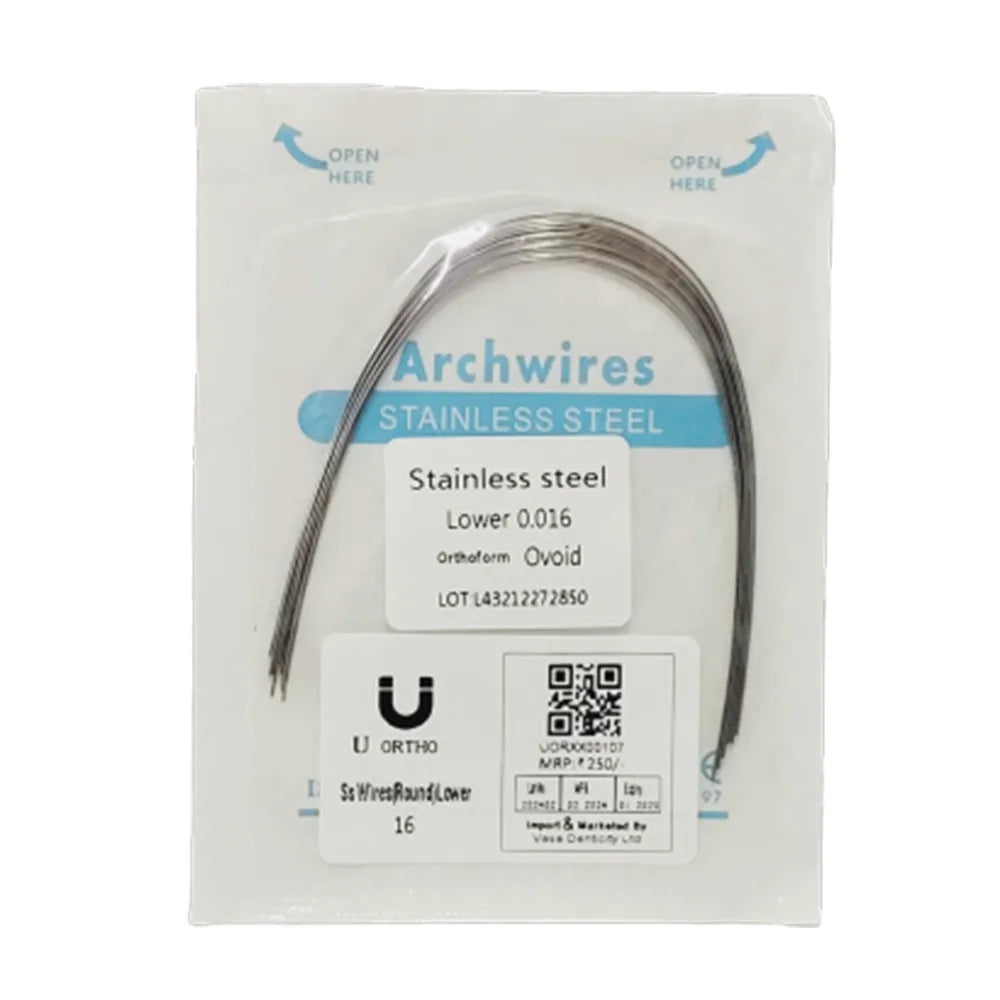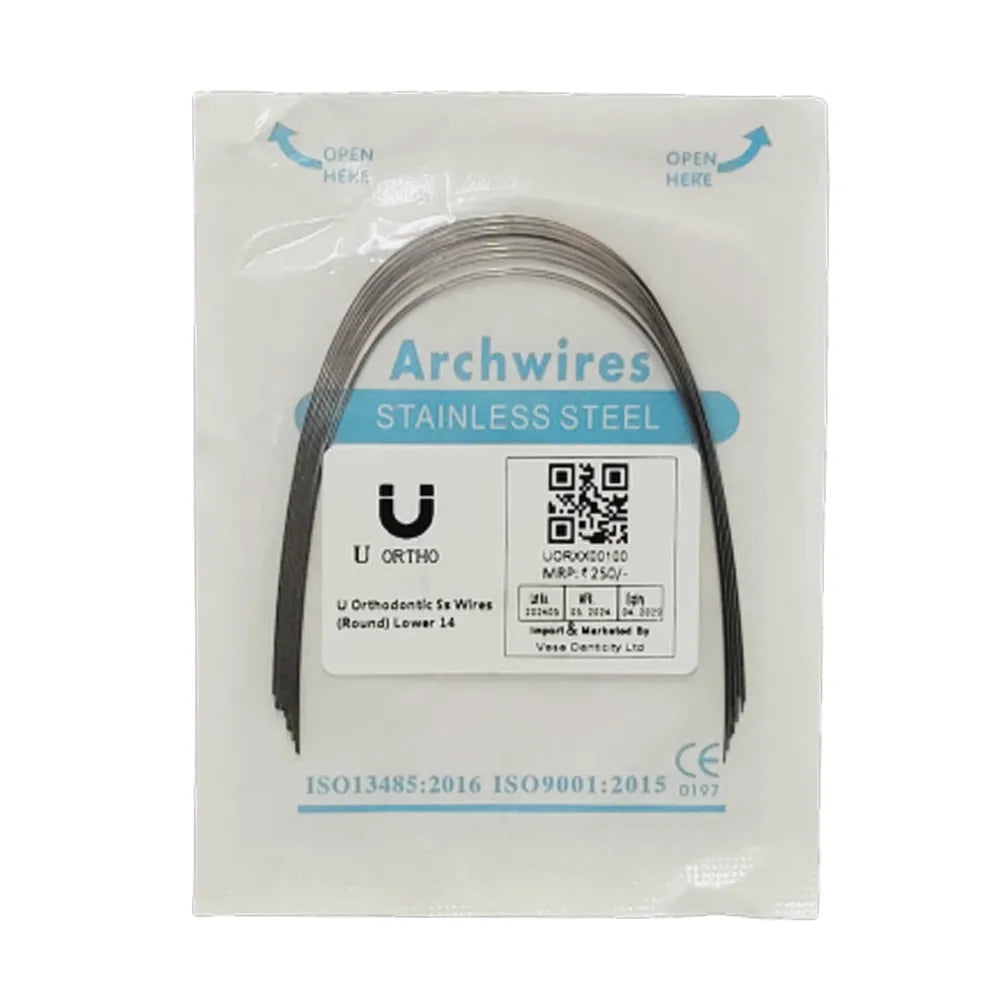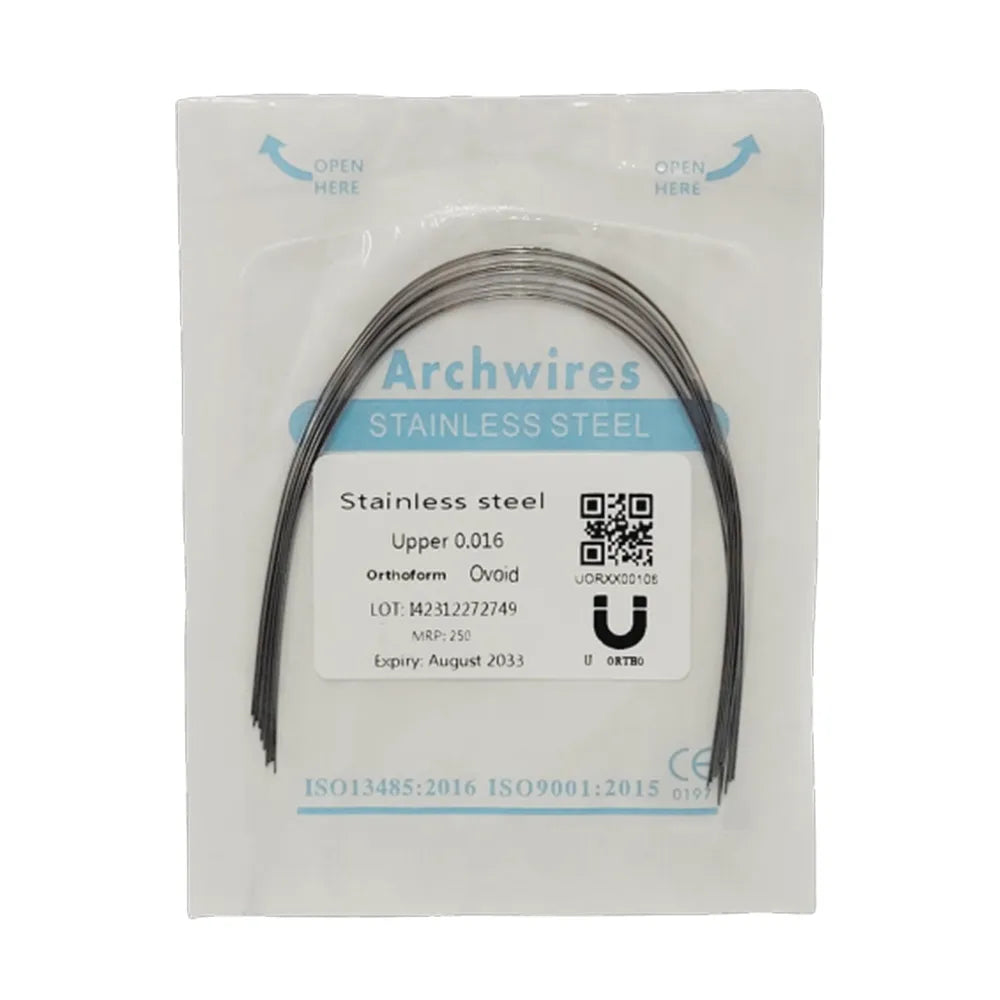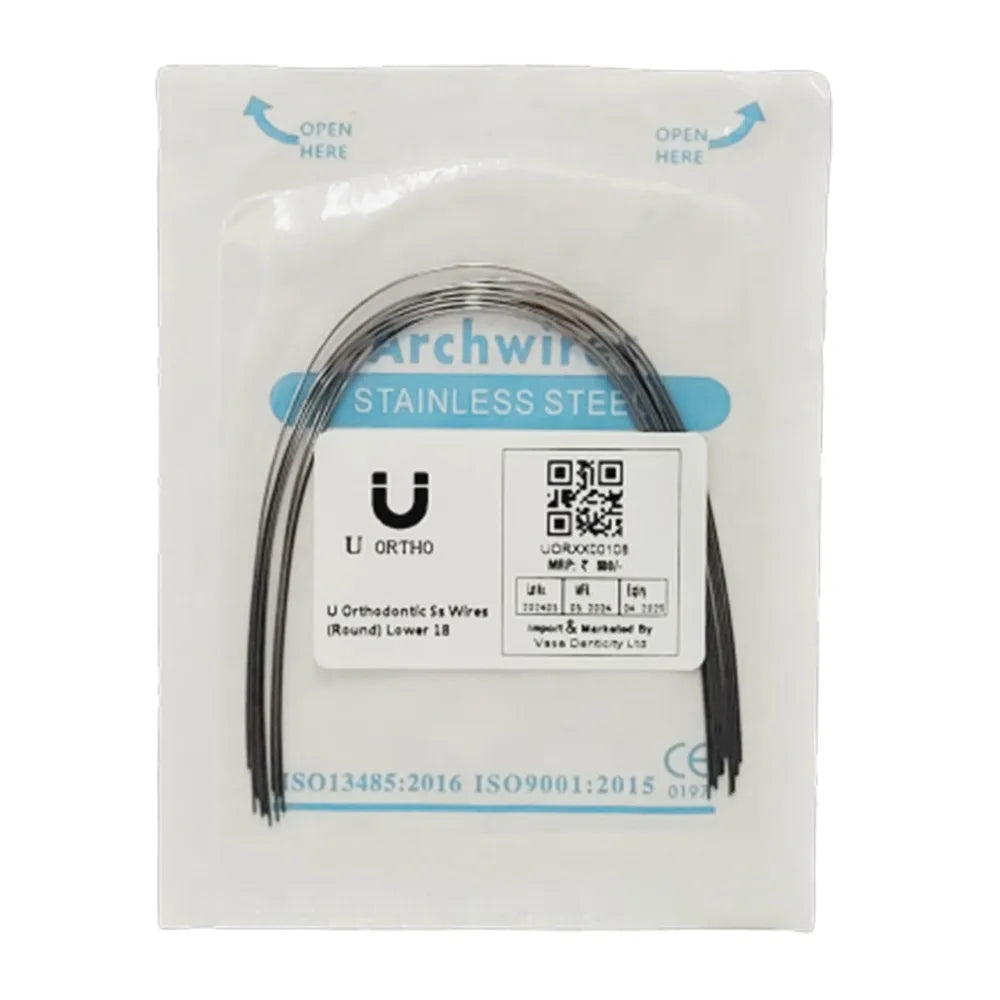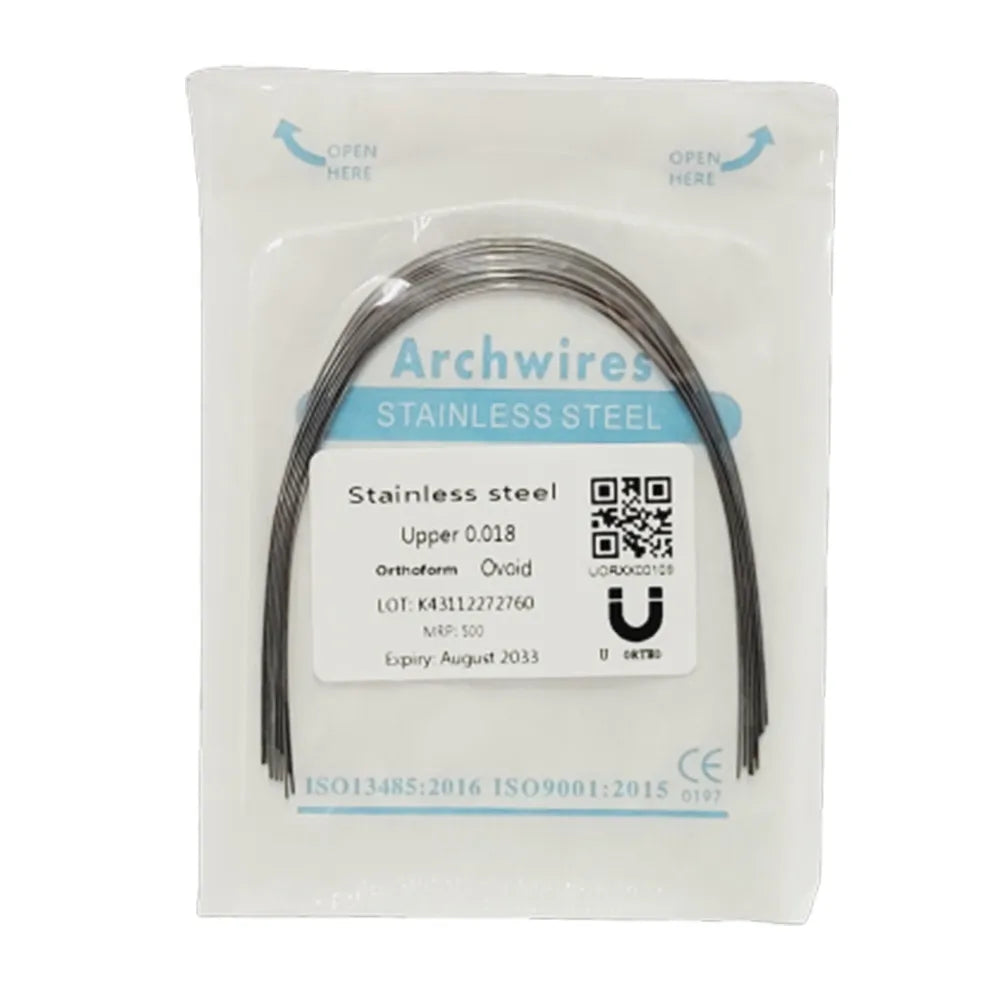U Ortho
U Ortho Ss Wires (Round)
U Ortho Ss Wires (Round)
Couldn't load pickup availability
U Orthodontic Ss Wires (Round) Stainless Steel Arch Wire: Stainless steel arch wire used through the entire treatment , but are best suited for mid-to-late stages of treatment. Orthodontic archwires may be fabricated from several alloys, most commonly stainless steel, nickel-titanium alloy (NiTi), and beta-titanium alloy (composed primarily of titanium and molybdenum).
A special alloy in the arch wire provides maximum spring while minimizing fracturing.
They also had better formability and can be readily used to be soldered and welded for fabrication of complex orthodontic appliances. The stainless steel alloys are of "18-8" austenitic type which contain Chromium (17-25%) and Nickel (8-25%) and Carbon (1-2%). Chromium in this stainless steel alloy forms a thin oxide layer which blocks the diffusion of oxygen into the alloy and allow for the corrosion resistance of this alloy.
Features
Features
- These wire have greater strength and range and lesser friction and relaxation.
- Wires are designed to move teeth with light continuous forces.
- They have an outstanding combination of mechanical properties, corrosion resistance.
- These wire have large springback, low stiffness, good formability, high stored energy, biocompatibility and environmental stability, and the capability to be welded.
Description
Description
Specification
Specification
- "18-8" austenitic type stainless steel wire.
- Consist of chromium (17-25%) and nickel (8-25%) and carbon (1-2%)
- Corrosion resistant
Packaging
Packaging
- 10 wires in 1 packet
Direction to use
Direction to use
- Ensure proper sterilization: Before using the U Ortho Ss Wires (Round), make sure it has been properly sterilized according to recommended protocols to maintain asepsis.
- Select the appropriate archwire: Choose the U Ortho Ss Wires (Round) according to the tooth.
- Prepare the archwire: If necessary, perform any required custom bends or loops on the archwire using appropriate orthodontic pliers or bending tools. This allows for personalized adjustments based on the patient's specific treatment requirements.
- Insertion and placement: Carefully insert the U Ortho Ss Wires (Round) into the bracket slots, ensuring proper engagement and alignment. Pay attention to the archwire's orientation and make any necessary adjustments to achieve ideal positioning.
- Ensure the archwire is securely in place to maintain continuous pressure on the teeth, promoting desired tooth movement.
- Monitor progress: Regularly evaluate the patient's progress and make any necessary adjustments or changes to the archwire as treatment progresses. This may involve transitioning to different archwire sizes or making additional custom bends to achieve the desired orthodontic outcome
Additional info
Additional info
- Country of Origin: Made in PRC
Warranty
Warranty
- Warranty is not applicable for this product.
Product Related Questions
Product Related Questions
Question : What advantages do stainless steel arch wires offer?
Answer: Stainless steel arch wires provide maximum spring while minimizing the risk of fracturing. They also have better formability and can be easily soldered and welded for complex orthodontic appliance fabrication.
Question : Are U Ortho Ss Wires (Round) suitable for all stages of orthodontic treatment?
Answer: While these wires can be used throughout the entire treatment process, they are particularly well-suited for mid-to-late stages of treatment, where their strength and properties are most advantageous.
Question : What advantages do U Ortho Ss Wires offer during orthodontic treatment?
Answer: U Ortho Ss Wires have numerous benefits, including large springback, low stiffness, good formability, high stored energy, biocompatibility, and environmental stability. These properties contribute to their effectiveness in orthodontic procedures.
Question : Which types of alloys are used in U Ortho Ss Wires (Round)?
Answer: These wires are primarily fabricated from "18-8" austenitic stainless steel alloys, which typically contain Chromium (17-25%), Nickel (8-25%), and Carbon (1-2%). The presence of Chromium in the alloy creates a thin oxide layer that provides corrosion resistance.
Share
